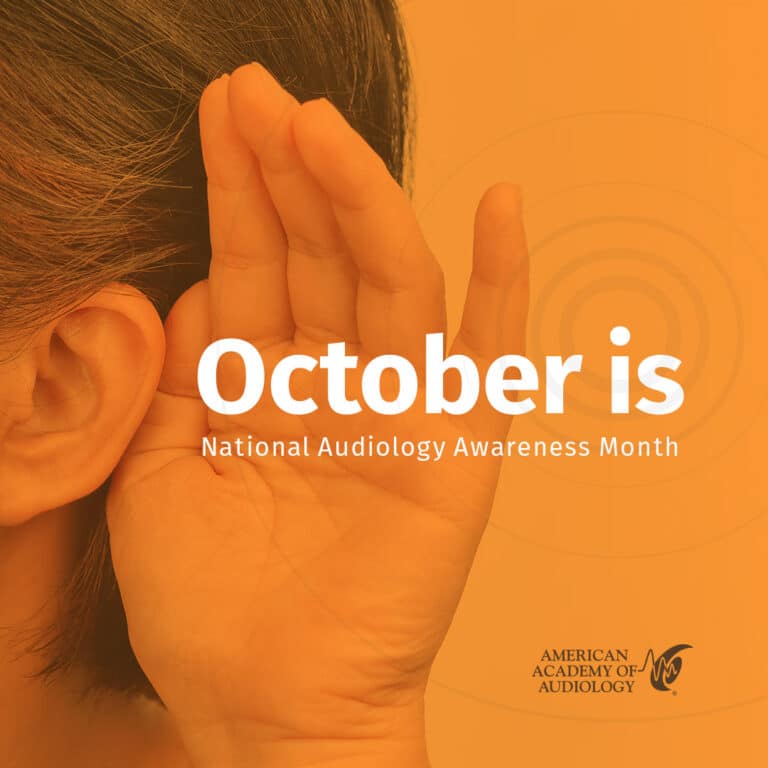Millions of people in Wilmington have hearing loss. The condition is widespread in Delaware and Southern Pennsylvania, affecting roughly 20 percent of the population. Contrary to popular belief, not everybody is old. In honor of National Audiology Awareness Month this October, we’d like to share some facts about hearing loss.
The Truth About Hearing Loss & Hearing Aids

National Audiology Awareness Month was created in 2008 by the American Academy of Audiology in an attempt to heighten awareness about hearing health and the importance of hearing protection. They say that knowledge is power, and the more you know, the better prepared you will be when dealing with this common condition.
- 48 million Americans experience hearing loss to some degree.
- Hearing loss affects people of all ages—not just senior citizens. In reality, only one-third of patients are 65 or older.
- Sensorineural hearing loss, also known as nerve deafness, affects the inner ear. Nine out of 10 people with hearing loss have this type, making it the most common. Damage to the inner ear is permanent, but the majority of patients will benefit from the use of hearing aids.
- Conductive hearing loss is the result of damage to the outer and/or middle ear. This type of hearing impairment is often reversible with surgery or medications. 10 percent of patients with hearing loss suffer from this type.
- Aging and noise are the most common causes of hearing loss. They are the result of cumulative damage to the hair cells of the inner ear that occurs gradually with exposure to noise. Other causes of hearing loss include disease, head and neck trauma, genetics and medications.
- One out of three adults will have hearing loss at age 65. By 75, about half of all Americans have hearing loss.
- 2-3 out of every 1,000 babies are born with hearing loss. Nowadays, hospitals screen newborns for hearing loss in order to detect problems before they are sent home. Early detection is important; children with impaired hearing experience delays in speech-language, social and academic development.
- 85 decibels (dB) is the safety threshold for noise exposure. The louder the volume, the less time you have before hearing loss can happen. It takes eight hours to experience hearing damage when noises measure 85 dB; at 100 dB, your safe listening time drops to 15 minutes.
- Hearing loss usually develops slowly, making it hard to notice. The average patient waits seven years from the onset of hearing loss before seeking treatment. The brain fills in the missing gaps by diverting cognitive resources from key areas such as concentration and memory to assist in the hearing process. This can lead to a variety of social, psychological and physical health effects.
- Noise exposure, the most common contributing factor of hearing loss, can be prevented by wearing hearing protection whenever you are going to be participating in activities that are noisy. Earplugs are your best choice.
Do you need your hearing checked? Schedule an appointment today!
Now that you know more about hearing loss, you should have your hearing checked if you haven’t done so in a while! Your Wilmington audiologist recommends a baseline hearing screening to help determine changes to your hearing over time. Make an appointment today or call for more information.